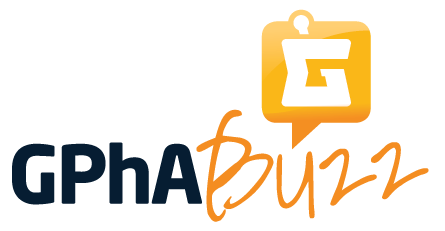Safety with sprinkles, big SIDS breakthrough, get your DIR answers, and more
10 May 2022
Posted by Andrew Kantor
Fraud-fighting sprinkles
What’s a simple way to counterfeit-proof a bottle of pills? Coat each pill with tiny beads of colored candy: nonpareils.
Each individual pill (!) would have a unique pattern of colored dots, kind of like a QR code. A patient could take a photo of a pill from the bottle and verify with the manufacturer that it’s legit.
If nonpareils are applied at random to a pill immediately after manufacture, the specific pattern they form is unlikely to ever be repeated by random chance; this means that the pattern (or “CandyCode”) can be used to uniquely identify the pill and distinguish it from all other pills.
With eight colors and about 92 beads on each pill, the inventor — UC Riverside bioengineering professor William Grover — says that it would allow 10^17 combinations “enough for 41 million pills for each person on earth.”
Get connected … legally
Most of you want to build a referral network with prescribers, hospitals, nursing homes, and the like. And most of you probably want to avoid prison. That’s why attorney Jeff Baird of Brown & Fortunato will be presenting “Building a Legally Compliant Referral Network” at the Georgia Pharmacy Convention.
Stay on the right side of Stark and federal anti-kickback statutes — learn the laws and regulations from the nationally acclaimed speaker that Surgeon General Jerome Adams called, “Who are you? How did you get this number?”
GPhA is bringing insight from Jeff Baird straight to you, live and in-person Saturday, June 10, at the Georgia Pharmacy Convention in (on?) Amelia Island, Florida!
So yes, that’s reason #624 to attend the convention — get registered today at GPhAConvention.com!
DIR questions? NCPA has answers
With DIR reform finally on the books, you might be wondering, “OK, what exactly does it mean?” We all know that new laws and regulations are never simple.
Our friends at NCPA are here to help. First there’s a six-page analysis put together by its policy team. That should answer most of your questions. But just in case, NCPA is holding a free Zoom-based webinar on May 17, at 8:00 p.m. EDT, “where we’ll outline the new CMS DIR rule and its impact on your pharmacy.” You can register here.
The newest Covid treatment is …
…interferon. Apparently, if given early during a Covid infection, it can dramatically cut the risk:
In a study of more than 1900 people, those who received a single shot of a drug called peginterferon lambda within 7 days of developing symptoms of Covid-19 were half as likely to be hospitalized or to endure lengthy emergency room visits as those who received placebo.
The grains of salt: It’s coming out of Brazil, which is not exactly the epicenter of good Covid-related science. It’s also a study done and reported by the drug’s maker, Eiger BioPharmaceuticals. (“Until we see a peer-reviewed publication, I am cautious re[garding] press release[s] from companies,” as one infectious disease specialist put it.)
Captain Obvious is tweaking his Instagram filters
“Social media break improves mental health”
Asking people to stop using social media for just one week could lead to significant improvements in their wellbeing, depression and anxiety.
It’s almost as if you’re medication experts or something
Take a wild guess: What particular healthcare practitioners can reduce medication-related problems with nursing home residents?
Why yes, “regular visits from pharmacists to aged-care residents can reduce problems due to medicines and improve health outcomes,” according to a study out of the University of South Australia. There, residents only had a medication review every two years, unless specifically required. And yet…
At each visit, pharmacists found 60 per cent of residents had problems with their medicines. [Over one year] They made 309 recommendations to change residents’ medications or monitor their medications with a view to change; and, for almost two thirds of the population, recommended reduced medicine use.
Disposal envelopes work after all
Well what d’ya know — even though they can simply flush unneeded meds down the toilet, only about 43 percent of people do that. But sending them opioid disposal kits increased that to 60 percent. So found emergency med researchers at Penn Medicine.
Even better — that 43 percent knew they were part of a study, so they aren’t your average Joes on the street. Those Average Joes (previous studies found) only throw out unneeded meds 20 to 30 percent of the time — so the mailed envelopes can double or triple that rate.
Today’s non-pharma medical story: SIDS breakthrough
Sudden Infant Death Syndrome is awful for too many reasons, including the fact that there’s rarely any warning. But now SIDS researchers in Australia may have made a major breakthrough: They seem to have found a biomarker that can predict it.
Simply put, the enzyme butyrylcholinesterase (BChE) is essential for the autonomic system. When it’s not working or there’s not enough, babies can die. Measuring BChE specific activity (BChEsa) is the key, even if it can’t explain why it’s happening:
BChEsa, measured in dried blood spots taken 2-3 days after birth, was lower in babies who subsequently died of SIDS compared to surviving controls and other Non-SIDS deaths. We conclude that a previously unidentified cholinergic deficit, identifiable by abnormal -BChEsa, is present at birth in SIDS babies and represents a measurable, specific vulnerability prior to their death.


